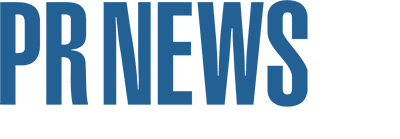
In 1981, University of Chicago economist Sherwin Rosen published a landmark paper titled "The Economics of Superstars," which explained why a slight edge in talent—whether in sports, entertainment or corporate skillsets—leads to a disproportionally higher earnings potential. More than 40 years later, his theory offers valuable insight into why content posted on LinkedIn follows patterns remarkably similar to Rosen's original framework.
To understand this dynamic, take a step back and look at LinkedIn’s evolution. Over the past year, LinkedIn surpassed 1.2 billion users, experienced a 40% year-over-year jump in content, and became a central hub in the creator economy, with names like Snoop Dogg and Arnold Schwarzenegger joining the platform.
We’ve observed—and hear from LinkedIn’s top editors—that consistent posting is critical in building trust and cultivating an audience. But, we also uncovered another benefit of consistency: It increases the odds of creating high impact “hit” posts that drive the majority of impressions, engagement and follower growth that corporate communication teams and executives are ultimately searching for.
Testing the Superstar Effect on LinkedIn
With that hypothesis in mind, we put our theory to the test. Specifically, we aimed to understand how widespread this superstar effect really is in posting dynamics—and how executive communication teams can strategically leverage LinkedIn’s features to improve their odds of crafting standout content that drives greater reach, engagement and overall "linkfluence."
Our team at Everywhere Agency partnered with SocialHP to audit the LinkedIn activity of 50 CEOs recognized as Top Voices, spanning both private and public companies. These executives represented diverse industries—including healthcare, finance and insurance—and had follower counts ranging from 3,000 to 55,000.
What we discovered was striking: Of the 554 posts shared by these 50 executives over the past year, just 7.46%, or one in thirteen, drove 81% of all reach, reactions, and follower growth.
That shows that yes, consistency builds trust and signals credibility to both the LinkedIn editorial team and stakeholder groups. But its impact goes even further. By posting consistently, executives increase their chances of landing the kinds of standout posts that truly break through—the ones that drive reach, influence and sustained momentum. That momentum, in turn, plays a key role in earning the coveted Top Voice status. And according to our March 2025 study, "Maximizing LinkedIn Engagement: Lessons from Top Voices and Fortune 500 CEOs," that status gives executives a measurable advantage—leading to higher engagement, more editorial features in the LinkedIn timeline and spotlight sections and significantly greater visibility than non–Top Voices.
Diving Deeper into the LinkedIn Data
We also found that LinkedIn’s "superstar effect" manifests differently depending on which post metrics you are examining. For instance, reposts were extremely concentrated: Just the top 3% of posts accounted for 92% of all repost activity within our audited cohort. Likes were somewhat more evenly distributed, but still heavily skewed, with 90% of all likes generated by only the top 10% of posts. Impressions showed slightly less concentration—here, the top 13% of posts produced 90% of total impressions. Interestingly, follower growth spikes were the least concentrated metric, with 90% of follower growth attributed to a comparatively broader set of posts—17%.
What the Superstar Effect Means for Communication Professionals
First, yes—consistency matters. If you're managing an executive, SME, or C-suite leader, you should be pushing for three to four posts per week. That cadence builds trust with your audience, visibility with the LinkedIn editorial team, and gives you more shots at uncovering those “hit” posts that really drive results. And when it comes to what those hit posts look like, here’s what we’ve seen work:
- Keep content tight yet impactful. Three to four short paragraphs hold readers’ attention and deliver value quickly in busy newsfeeds.
- Write like a human. Move beyond corporate speak, share a distinct point of view, use approachable language, and always think about what matters to the audience.
- Use visuals to stop the scroll. Posts that feature short-form video, bold creative or rich multimedia significantly boost the chances of being noticed, absorbed and shared to turn passive viewers into active engagers.
To effectively navigate the superstar effect within LinkedIn's posting dynamics—and consistently achieve breakthrough performance in your executive thought leadership program—communication and digital teams should incorporate these three essential strategies into their LinkedIn playbook.
- Define the content strategy with precision. It may sound obvious, but it’s one of the most common gaps. The brand and agency partners must clearly articulate the purpose of an executive’s presence on LinkedIn: What are the core content pillars? What is the strategic “why” behind each post? And most importantly, what value are you delivering to the audience? Answering these questions with clarity puts a brand miles ahead in an increasingly saturated feed.
- Treat LinkedIn like an always-on test lab. LinkedIn delivers a steady stream of structured (impressions, engagement) and unstructured (tone, topic, format) data that executive teams should be tracking. Pull post metrics one week after publication to ensure consistent, comparable benchmarks. Then layer in AI tools to unlock smarter A/B testing, surface content patterns, and even forecast what’s likely to perform best for future posts. Faster analysis means faster optimization, which brings you closer to your next breakout post.
- Don’t leave reach to chance. The fastest and most effective way to boost a post’s performance is to tap into the LinkedIn influencer and employee advocacy space. Engagement from employees, influencers or peers signals value to both the algorithm and broader audiences. Build employee advocacy programs, activate voices with credibility in your space, and respond to comments and reshares to keep conversations going. LinkedIn’s network effect is real, but it only works if the right audiences are mobilized to amplify messaging.
Crafting a “hit” LinkedIn post, one that truly moves the needle, can seem challenging. But, with the right level of consistency, strategies and frameworks surrounding your posts, teams can find their real impact on LinkedIn comes from creating enough momentum for the outliers to emerge and letting those few exceptional posts do the heavy lifting on an executive's journey to becoming a Top Voice.
Clayton Durant is Director of Emerging Media, and Dorianne Ciccarelli is Vice President of Digital at MikeWorldWide.
